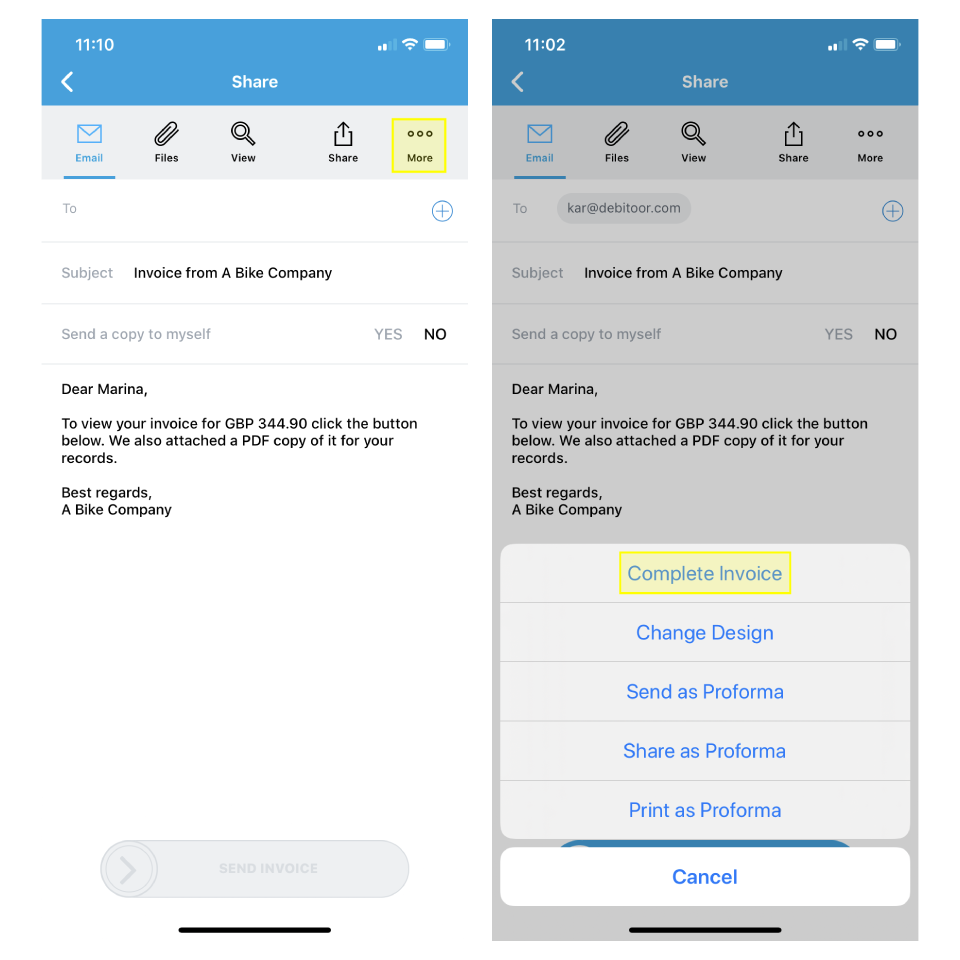We’re often contacted by users who want to know why their invoices say ‘proforma’. While this might seem like an unnecessary extra word, a proforma invoice is actually a specific type of invoice that serves a different purpose than a finalised invoice.
This blog post explains how proforma invoices differ from finalised invoices, whether your invoices should say ‘proforma’, and how to send or finalise a proforma invoice with Debitoor invoicing software.
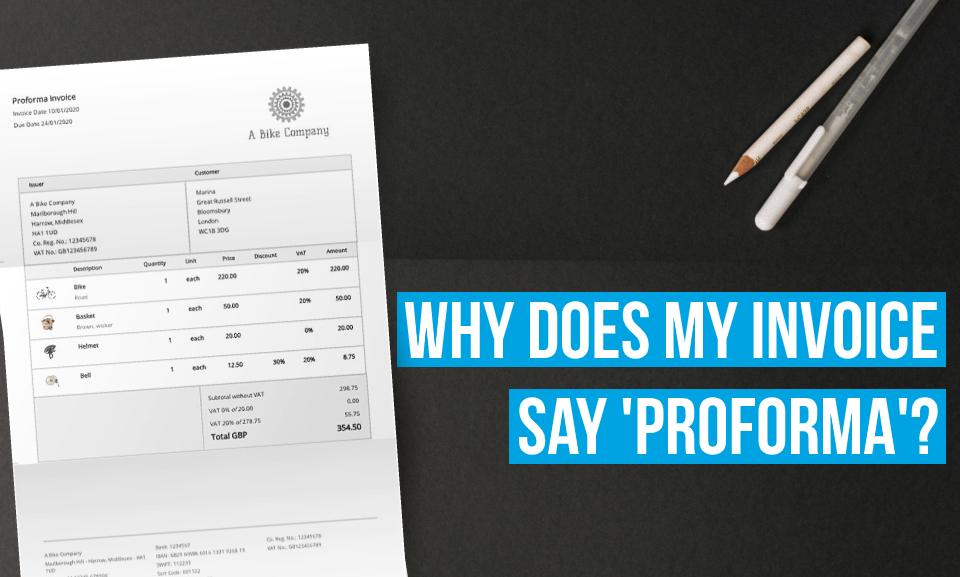
How is a proforma invoice different from a standard invoice?
A proforma invoice is essentially a draft invoice, and they’re usually issued before the final details of a sale are known.
Because proforma invoices aren’t finalised, they don’t have any fiscal or legal value. This means that you shouldn’t record proforma invoices in your accounts, and customers aren’t obliged to pay until they receive a true invoice. You also can’t use a proforma invoice to reclaim VAT.
Like a finalised invoice, proforma invoices contain important information about you, your customer, and the goods or services provided. However, they’re not assigned invoice numbers, and they should be clearly labelled with the words ‘proforma invoice’ instead of just ‘invoice’.
Should my invoice say ‘proforma’?
Your invoices should only say ‘proforma’ if you actually want to issue a proforma invoice, and there are a few different circumstances in which it might be more appropriate to send a proforma invoice than a finalised invoice.
For example, proforma invoices are commonly sent with a shipment of goods to provide customs officials with information about the products in the shipment.
It’s also common to issue a proforma invoice instead of a finalised invoice if the details of the sale might change. Invoices are issued to request or confirm payment, whereas proforma invoices are issued to confirm that a seller is committed to providing goods or services at a specific price. You should therefore issue a proforma invoice when a customer wants confirmation of a sale before you can fully commit to a final price.
However, if you do want to issue a finalised invoice, it’s important that your invoices aren’t accidentally labelled as proforma invoices, as this will stop the invoices being recognised as true, official documents.
If you accidentally send a proforma invoice instead of a finalised invoice, make sure that you issue a true invoice as soon as possible.
Proforma invoices in Debitoor invoicing software
It’s easy to create and send proforma invoices with Debitoor invoicing software – and it’s just as easy to convert a proforma invoice to a finalised invoice.
Whenever you create an invoice with Debitoor, you start out with a draft invoice. Until an invoice is finalised, it will be labelled as a proforma invoice, and it won’t be assigned an invoice number. You can either share the proforma invoice with your customer or convert it to a finalised invoice.
Send a proforma invoice with Debitoor
How to send a proforma invoice with Debitoor invoicing software
If you want to send a proforma invoice from our web app, you can do this by clicking on ‘...More’ then ‘Send as proforma’.
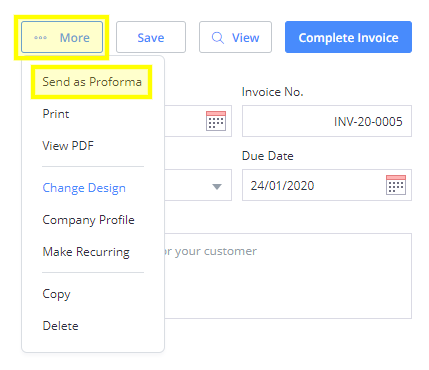
You can also issue proforma invoices from the Debitoor iOS app or Debitoor Android app. After filling in your invoice, tap ‘Next’. Then select the three dots labelled ‘More’ and choose ‘Send as proforma’ to email the proforma invoice to your customer.
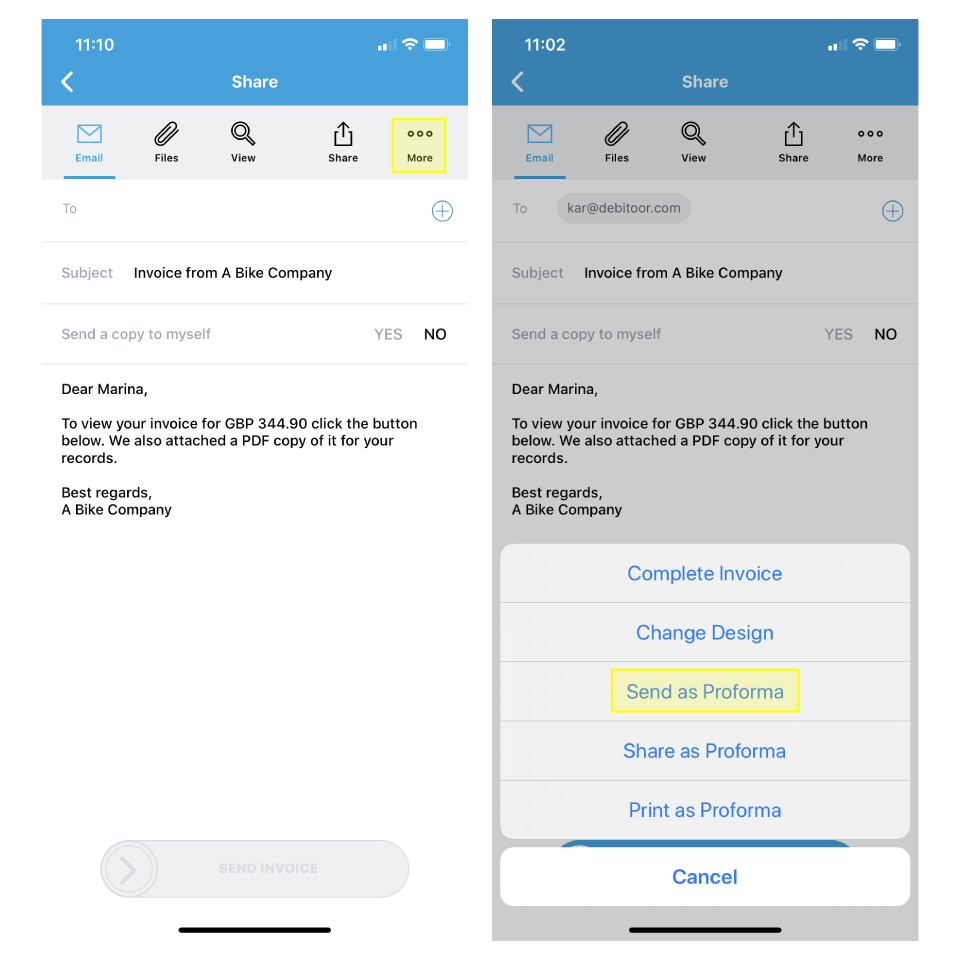
How to finalise an invoice in Debitoor invoicing software
If you want to finalise an invoice from the Debitoor web app, all you have to do is click on the blue button labelled ‘Complete invoice’.
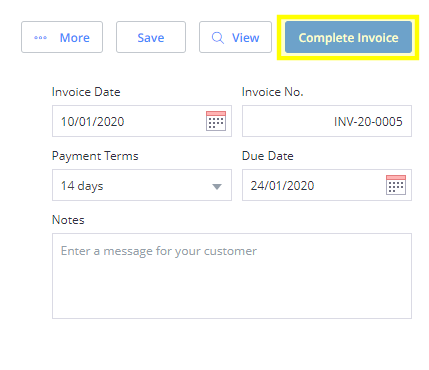
Your proforma invoice will be converted to a true invoice, which means that it will no longer say ‘Proforma’ and it will be assigned an invoice number. You can then send, share, download, or print the finalised invoice.
If you send an invoice from the mobile app, it will automatically be converted to a finalised invoice unless you choose to send it as a proforma. However, if you want to finalise the invoice before sending it, tap on the three dots labelled ‘More’ and select ‘Complete Invoice’.
